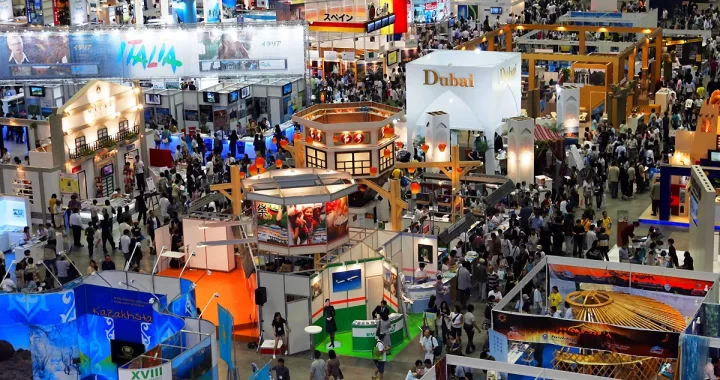Beyond Ramps: Weaving Accessibility and Inclusivity Into the Fabric of Your Trade Show

The energy of a trade show is undeniable. A symphony of conversation, the visual feast of booths, the handshakes that spark new partnerships. But for a significant portion of your potential audience, that symphony can sound like static. The visual feast can be a maze of barriers. The handshake? Out of reach.
For too long, accessibility and inclusivity in event planning were an afterthought—a checkbox for ADA compliance, maybe a ramp tucked away in a corner. But here’s the deal: that’s not just a missed opportunity; it’s a fundamental flaw in your strategy. True inclusivity isn’t about checking boxes. It’s about opening doors. It’s about designing an experience where every single attendee, exhibitor, and speaker feels genuinely welcomed, valued, and able to participate fully.
Why This Isn’t Just “The Right Thing To Do”
Sure, it’s morally imperative. But let’s be practical, too. Ignoring accessibility means you’re willingly excluding a massive market. We’re talking about one in four adults in the U.S. living with some form of disability. That’s a huge segment of potential customers, brilliant partners, and influential voices you’re simply not engaging.
An inaccessible event is like a store with a broken door. People might peer in, but they can’t come inside to see what you’re selling. By proactively planning for accessibility, you’re not just avoiding legal risk; you’re amplifying your brand’s reach, fostering loyalty, and tapping into a powerful, often overlooked, economic force.
The Physical Space: More Than a Wheelchair Ramp
When we think “accessibility,” physical mobility is often the first thing that comes to mind. And it’s crucial. But it’s more than just a ramp at the entrance.
Navigation and Movement
Imagine navigating a crowded, noisy hall while using a walker or a wheelchair. Wide aisles aren’t a luxury; they’re a necessity. You need to plan for a 5-foot minimum aisle width to allow for comfortable passing and turning. And those beautiful, plush carpets? For someone manually propelling a chair, they can feel like wading through sand. Opt for low-pile, firm carpeting or hard flooring.
Sensory Considerations
Trade shows are a sensory overload for many. The constant hum, flashing lights, and dense crowds can be debilitating for neurodiverse individuals or those with sensory processing disorders. Honestly, it can be a lot for anyone.
A simple yet profound solution? Create a quiet room. A designated, low-stimulus space where attendees can decompress, recharge, or simply escape the chaos for a few minutes. It’s a lifeline.
Also, think about your signage. Is it clear, high-contrast, and easy to read? Using pictograms alongside text can help everyone, including non-native speakers, navigate more easily.
The Digital Layer: Your Unseen Welcome Mat
Accessibility starts long before the doors open. Your website and registration portal are the first touchpoints. Are they built with web accessibility standards (WCAG) in mind?
This means:
- Alt-text for all images, so screen reader users can understand visual content.
- Forms that can be navigated with a keyboard alone.
- Captions for any promotional videos.
- A clear, simple registration process that asks about accommodation needs proactively, not as a tiny, buried footnote.
Your digital presence is your event’s welcome mat. If it’s tangled and difficult to cross, you’ve already set a negative tone.
Communication and Content: Speaking Everyone’s Language
Inclusivity is also about how you share information. Let’s break it down.
For the Hearing Impaired
Keynote speeches and educational sessions are core to the trade show value proposition. But if you can’t hear them, what’s the point? Provide real-time captioning (CART) for all major presentations. It’s a game-changer. For smaller meetings or booth interactions, having a notepad or tablet handy for written communication can make all the difference.
For the Visually Impaired
Offer large-print versions of agendas, maps, and important handouts. And consider this: could you provide a tactile map of the show floor? It’s an innovative way to help blind or low-vision attendees orient themselves spatially.
A Quick Checklist for Inclusive Trade Show Planning
| Category | Action Item |
| Physical Access | Wide aisles (5ft+), quiet room, low-pile carpet, accessible restrooms throughout. |
| Digital Access | WCAG-compliant website, captioned videos, accessible registration form. |
| Communication | Real-time captioning for sessions, large-print materials, staff training on disability etiquette. |
| Service Animals | Clear policy welcoming service animals, relief areas clearly marked. |
| Staff & Volunteer Training | Train all personnel to be helpful, ask “How can I assist you?” and respect individual autonomy. |
The Human Element: Your Most Powerful Tool
You can have all the ramps and captions in the world, but if your staff and volunteers aren’t on board, it falls flat. Training is non-negotiable. Teach them about disability etiquette. The core principle? Don’t make assumptions. Ask, “How can I assist you?” and then listen. Respect a person’s autonomy. If someone uses a wheelchair, talk to them, not to the person they’re with. It’s a small thing that speaks volumes.
This human-first approach transforms your event from a merely accessible one to a truly welcoming one. It’s the difference between being allowed in and feeling like you belong.
The Ripple Effect of Getting It Right
So, what happens when you weave this mindset into your planning? The benefits ripple outwards. You foster a more diverse and innovative community. You get richer conversations and more meaningful connections. Your brand earns a reputation not just for what you sell, but for how you make people feel.
In the end, planning an accessible and inclusive trade show is about more than logistics. It’s about shifting your perspective. It’s about seeing your event through many different sets of eyes and asking, not “Is this compliant?” but “Is this welcoming?” The goal is to create a space where the only thing that stands out is the quality of the ideas, not the barriers to reaching them.










